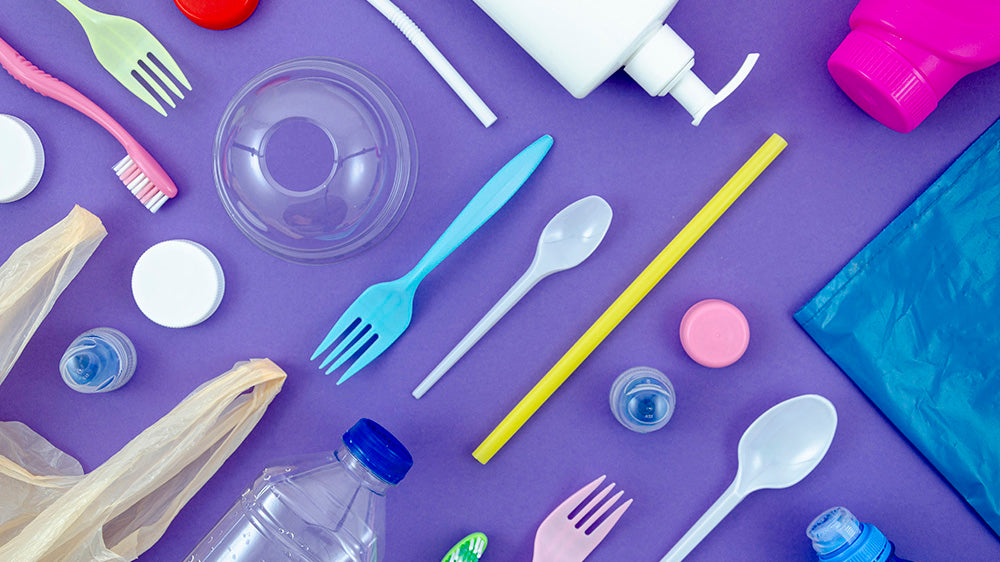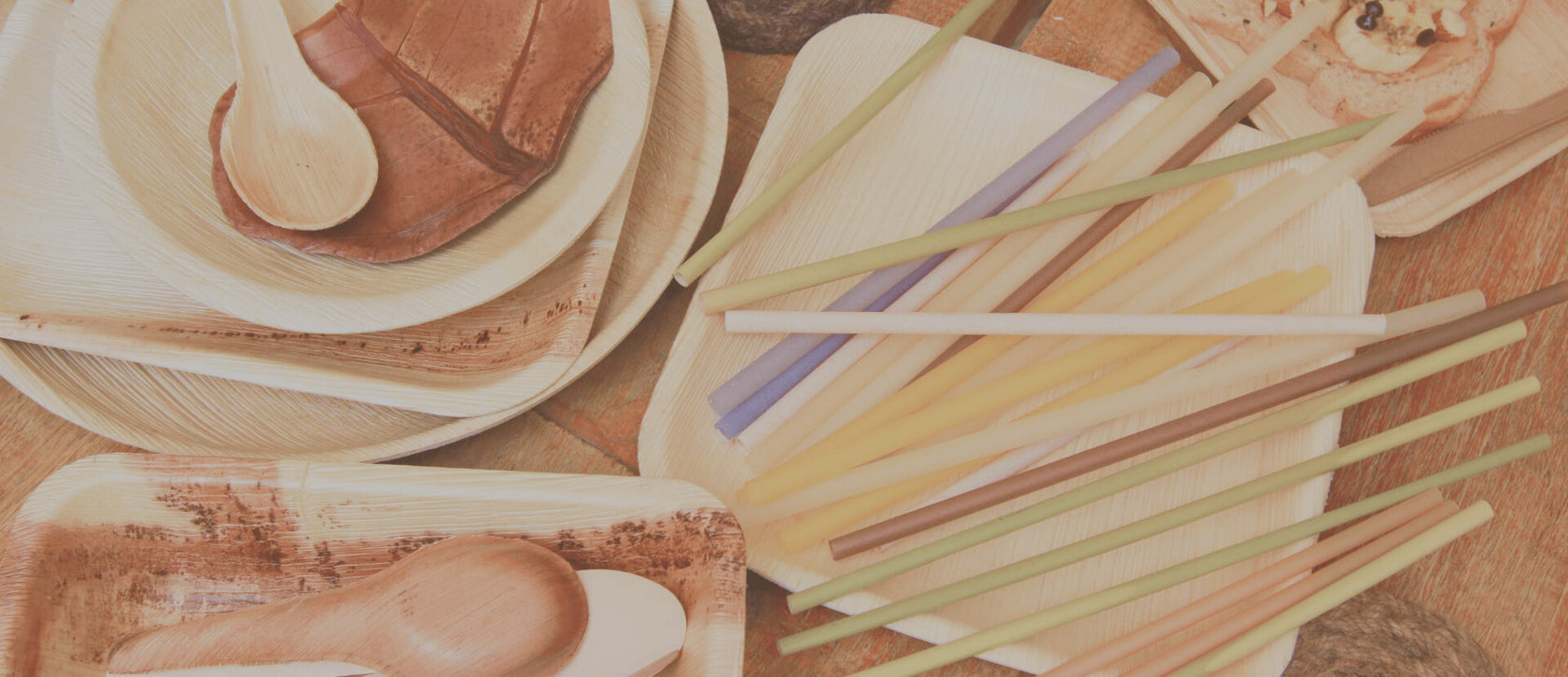Nhựa là vật liệu được sử dụng rộng rãi trong nhiều ứng dụng khác nhau do tính linh hoạt, giá cả phải chăng và dễ sản xuất. Tuy nhiên, việc lạm dụng và sử dụng nhựa không kiểm soát đã gây ra nhiều vấn đề về môi trường và sức khỏe. Để ngăn ngừa và giảm thiểu những hậu quả tiêu cực của việc sử dụng nhựa, con người đã dần chuyển sang hướng lựa chọn những vật liệu thay thế. Trong bài viết này, EQUAO sẽ giới thiệu một số vật liệu thay thế tiêu biểu cho nhựa cùng với những ứng dụng cụ thể, sáng tạo. Chắc chắn bạn sẽ tìm được những sản phẩm phù hợp trên hành trình giảm thiểu rác thải nhựa.
1. Gốm sứ
Những tài liệu này không còn xa lạ với mỗi chúng ta. Trong thời đại mà nhựa đang trở thành mối lo ngại lớn về ô nhiễm và sức khỏe, gốm sứ nổi lên như một lựa chọn thiết thực nhằm giảm thiểu tác động tiêu cực của nhựa đến môi trường. Gốm sứ nổi bật với khả năng chịu nhiệt, không chứa các chất độc hại và có khả năng tái chế. Vì vậy, hai chất liệu này thường được sử dụng để chế tạo các vật dụng gia đình như bát, đĩa, ấm trà,… Sử dụng đồ gốm sứ giúp bảo vệ sức khỏe đồng thời tăng giá trị kinh tế do độ bền vốn có của sản phẩm.

Nhựa có thể nhận được nhiều ưu ái hơn trong các khía cạnh khác nhau của cuộc sống hàng ngày. Tuy nhiên, xét về mặt thẩm mỹ, nghệ thuật thì nhựa không thể so sánh được với gốm sứ. Sự đa dạng về màu sắc và hình dáng của gốm sứ khiến chúng trở thành nguồn cảm hứng tuyệt vời cho các nghệ sĩ và nhà thiết kế. Từ bát, đĩa cho đến các tác phẩm nghệ thuật trang trí như tranh, bình hoa, gốm sứ đều đã chứng tỏ được tính linh hoạt trong nhiều lĩnh vực và độ tinh tế thẩm mỹ cao. Đặc biệt, những sản phẩm trưng bày này không chỉ đẹp mà còn thân thiện với môi trường. Có thể nói, gốm sứ xứng đáng là vật liệu thay thế tuyệt vời cho nhựa, biểu tượng của sự tinh tế và sáng tạo trong đời sống hằng ngày.
2. Kính
Nếu hành trình tìm kiếm vật liệu thay thế nhựa là một cuộc cạnh tranh thì thủy tinh sẽ là đối thủ nặng ký của gốm sứ.

Bền và an toàn như gốm sứ, bạn có thể thấy sự hiện diện của thủy tinh trong những chiếc bình trang trí đẹp mắt cho đến hộp đựng thức ăn hàng ngày. Thủy tinh với độ trong suốt và sáng bóng không chỉ làm nổi bật sản phẩm mà còn giữ an toàn cho thực phẩm, đồ uống, đảm bảo độ tươi ngon. Khả năng chịu nhiệt và chống ẩm của thủy tinh khiến nó trở thành người bạn đồng hành lý tưởng trong việc bảo quản thực phẩm.
Ngoài ra, kính còn thường được sử dụng trong sản xuất đèn trang trí, gương và nhiều sản phẩm nghệ thuật khác.
Những đặc điểm và ưu điểm độc đáo của kính đã và đang thay đổi cách chúng ta nhìn nhận việc sử dụng vật liệu trong cuộc sống hàng ngày. Chúng ta phải thừa nhận khả năng tái chế cao của thủy tinh, điều này sẽ giúp giảm thiểu chất thải và góp phần nỗ lực xây dựng một môi trường sống bền vững hơn.
3. Thép không gỉ
Lý do nào khiến bạn không từ bỏ thói quen sử dụng đồ nhựa? Có lẽ, bạn vẫn còn e ngại rằng các sản phẩm làm bằng gốm sứ hay thủy tinh sẽ dễ vỡ? Trong trường hợp đó, thép không gỉ là một giải pháp tuyệt vời cho bạn.
Thép không gỉ chủ yếu được sử dụng trong sản xuất đồ gia dụng, đồ trang trí và các sản phẩm công nghiệp khác nhau. Đặc điểm nổi bật nhất của nó là khả năng chống ăn mòn, giúp sản phẩm giữ được vẻ đẹp và độ tươi mới theo thời gian. Sự đa dạng về mẫu mã, kiểu dáng khiến sản phẩm inox phù hợp với nhiều không gian, phong cách.

Không chỉ là chất liệu bền bỉ, chắc chắn, thép không gỉ còn thường được sử dụng trong các sản phẩm y tế, thực phẩm do tính an toàn, vệ sinh. Tất cả những yếu tố này làm cho thép không gỉ trở thành lựa chọn lý tưởng cho những ai đang tìm kiếm vật liệu an toàn và bền vững.
>> Đọc thêm:
- Các lựa chọn thay thế thân thiện với môi trường tốt nhất cho nhựa giúp cuộc sống của bạn xanh hơn
- 10 Cách Giảm Rác Thải Nhựa Tại Nhà
- 6 Vật Liệu Đóng Gói Thân Thiện Với Môi Trường Tốt Nhất Cho Doanh Nghiệp Của Bạn
- 7 Ống Hút Hữu Cơ Thân Thiện Với Môi Trường Tốt Nhất Được Làm Từ Nguyên Liệu Tự Nhiên
- Lệnh cấm nhựa dùng một lần: Mọi điều bạn cần biết
4. Nguyên liệu thực vật
Với công nghệ tiên tiến, nhựa cũng có nguy cơ biến mất hoàn toàn khỏi bản đồ tiêu dùng do sự xuất hiện của nguyên liệu có nguồn gốc thực vật. Hãy cùng EQUAO điểm lại một số cái tên nổi bật:
4.1. Gỗ
Đây là sự lựa chọn số một để thay thế nhựa trong nội thất và xây dựng. Gỗ được sử dụng trong xây dựng các công trình như nhà ở, cầu cống và các công trình công cộng khác do tính chất cơ lý và khả năng chịu tải tốt. Sản phẩm gỗ được sử dụng để làm đồ nội thất như bàn, ghế, tủ, giường, tạo nên không gian ấm áp và thiết kế sáng tạo. Cùng với việc gỗ được coi là vật liệu bền vững nên mọi người có thể tin tưởng sử dụng và giảm bớt sự phụ thuộc vào các sản phẩm nhựa.

4.2. Bã mía
Mặc dù không bền và có tính thẩm mỹ cao như gỗ nhưng bã mía vẫn được sử dụng làm vật liệu thay thế nhựa. Ứng dụng phổ biến nhất của nó là trong các sản phẩm sử dụng một lần như đĩa, thìa và ống hút. Điều đáng ngạc nhiên là bã mía còn được sử dụng để sản xuất ván và tấm ốp tường trong ngành xây dựng và trang trí nội thất.- Về ống hút mía, đây là sản phẩm thân thiện với môi trường của EQUAO được làm từ 100% bã mía, có thể phân hủy hoàn toàn trong môi trường tự nhiên. Ống hút có mùi mía nhẹ nhưng sẽ không mang lại hương vị gì cho đồ uống của bạn. Ống hút mía có cấu tạo và độ bền tương tự ống hút nhựa nhưng lại thân thiện với môi trường. Để biết thêm thông tin chi tiết về sản phẩm, bạn có thể tham khảo:
>> https://shopequo.com/products/sugarcane-straws

- Đối với những chuyến dã ngoại, ăn uống ngoài trời thường phát sinh ra một lượng lớn rác thải nhựa thì không nhất thiết phải như vậy! Bộ dụng cụ (thìa, nĩa, dao) của EQUAO được làm từ bã mía nên có độ bền cao, chịu nhiệt, chống ẩm tốt, chắc chắn, dễ sử dụng mà không bao giờ bị sũng nước. Những đồ dùng có thể phân hủy sinh học này được làm từ sợi mía và không chứa nhựa hoặc hóa chất độc hại, khiến chúng không chỉ tuyệt vời cho hành tinh mà còn tốt hơn cho sức khỏe của bạn. Để biết thêm thông tin chi tiết về sản phẩm, bạn có thể tham khảo:
>> https://shopequo.com/products/equo-sugarcane-utensils-knives-spoons-forks-pack-of-30-10-each

4.3. Bã cà phê
Được tái chế tương tự như bã mía, bã cà phê đã được đúc thành những sản phẩm chất lượng như cốc, ống hút, khẩu trang vừa đáp ứng yêu cầu về thẩm mỹ vừa bảo vệ môi trường.
-
Ống hút: Ống hút cà phê là giải pháp thay thế thân thiện với môi trường, thay thế hoàn toàn ống hút nhựa. Mạnh mẽ và bền bỉ, chúng không bị vỡ khi ngâm trong nước và phân hủy hoàn toàn trong môi trường tự nhiên, làm giàu đất như một loại phân bón có khả năng phân hủy sinh học. Được làm từ 100% nguyên liệu tự nhiên, những chiếc ống hút này an toàn cho sức khỏe con người.
>> https://shopequo.com/products/coffee-straws

-
Bộ dụng cụ ăn uống: Những dụng cụ ăn uống dùng một lần như dao, thìa, nĩa không còn xa lạ và được ưa chuộng vì sự tiện lợi của chúng. Tuy nhiên, lượng chất thải nhựa đáng kể được tạo ra từ việc sử dụng chúng hàng ngày là rất đáng kể. Bộ dụng cụ làm từ bã cà phê là sự thay thế hoàn hảo, thân thiện với môi trường, nâng cao hương vị và sự tiện lợi cho bữa ăn đồng thời thúc đẩy tính bền vững.
>> https://shopequo.com/products/equo-coffee-utensils-knives-spoons-forks-pack-of-30-10-each

4.5. Tre, mây và sậy
Ngoài ra, tre, mây, sậy cũng có thể thay thế các sản phẩm nhựa. Sợi mây tre được sử dụng để làm túi xách, ba lô và các vật dụng đựng đồ khác vì độ bền tốt và kiểu dáng tự nhiên, thú vị. Trong khi đó, sậy thường được ứng dụng làm đèn trang trí, đèn treo và các đồ trang trí ngoài trời khác.

4.4. xơ mướp
Đừng vội vứt bỏ xơ mướp đã trưởng thành vì khi sấy khô, sợi xơ mướp có rất nhiều ứng dụng hữu ích. Sợi xơ mướp có thể thay thế một số mặt hàng nhựa. Ví dụ như miếng bọt biển rửa bát xơ mướp mềm, nhẹ, tạo nhiều bọt, hay miếng bọt biển tắm xơ mướp có đặc tính tẩy tế bào chết, giảm nếp nhăn và kích thích tuần hoàn máu trên da. Tất cả những sản phẩm này đều có thể thay thế dễ dàng cho các mặt hàng nhựa - thứ không mang lại nhiều giá trị kinh tế cũng như hiệu quả cao như sợi xơ mướp.

4.6. Giấy
Vật thay thế quen thuộc nhất cho nhựa trong thế kỷ 21 là giấy. Sản phẩm được sử dụng rộng rãi nhất là túi giấy và bao bì tái chế. Điều đáng ngạc nhiên là sổ ghi chép, bút và các đồ dùng văn phòng khác có thể được làm từ giấy, thay vì sử dụng các sản phẩm bằng nhựa. Dù thay thế nhựa trong bao bì hay đồ dùng văn phòng, nguyên liệu có nguồn gốc tự nhiên này đều góp phần giảm tiêu thụ nhựa và thúc đẩy tái chế giấy.

Nhựa đã cách mạng hóa thế giới trong nhiều thế kỷ như một sự đổi mới vĩ đại. Tuy nhiên, chúng ta sẽ không cho phép nhựa hủy hoại tương lai bằng cách để rác thải nhựa hủy hoại môi trường và gây hại cho sức khỏe. Hiện nay chúng ta đã có những vật liệu có tiềm năng thay thế nhựa như gỗ, bã mía, xơ mướp, giấy,… Dù mỗi vật liệu đều có những nhược điểm riêng nhưng việc thay đổi thói quen sử dụng nhựa là giải pháp tối ưu và bền vững nhất, đưa nhân loại đến gần hơn với môi trường. mong muốn khôi phục lại màu xanh của Trái đất. Hãy cùng EQUAO thay đổi bắt đầu từ hôm nay!






